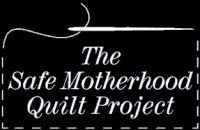 The preliminary data for births in 2008 has been released by the CDC's National Center for Healthcare Statistics. Florida has risen to an all-time high 38.2% cesarean section rate. Sarasota Memorial Hospital's c-section rate for the same year was 41.7%, a slight increase from their 2007 reported data of 41.3%.
The preliminary data for births in 2008 has been released by the CDC's National Center for Healthcare Statistics. Florida has risen to an all-time high 38.2% cesarean section rate. Sarasota Memorial Hospital's c-section rate for the same year was 41.7%, a slight increase from their 2007 reported data of 41.3%.These numbers are simply dangerous. As they continue to increase (up over 50% in the last decade), so do our maternal mortality rates. These are a few facts taken from the Independent Childbirth Education Association:
-The World Health Organization (WHO) states that no region in the world is justified in having a cesarean rate greater than 10 to 15 percent.
-A cesarean section poses documented medical risks to the mother's health, including infections, hemorrhage, transfusion, injury to other organs, anesthesia complications, psychological complications, and a maternal mortality two to four times greater than that for a vaginal birth.
-An elective cesarean section increases the risk to the infant of premature birth and respiratory distress syndrome, both of which are associated with multiple complications, intensive care and burdensome financial costs. Even mature babies, the absences of labor increases the risk of breathing problems and other complications.
-Cesareans can delay the opportunity for early mother-newborn interaction, breastfeeding and the establishment of family bonds.
-The four most common medical causes contributing to the increase in cesarean section rates in North America are: routine repeat cesareans; dystocia (non-progressive labor); breech presentation; and fetal distress. Some reports suggest that more careful diagnosis and management of dystocia could halve the primary section rate. Combined with fewer cesareans for breech presentation (along with more cephalic versions), careful diagnosis of fetal distress and active encouragement of VBAC, these efforts have resulted in lowering cesarean rates to less than 12% in various parts of the world.
-Cesarean rates are influenced by non-medical factors. Rates are higher for women who have private medical insurance, are private rather than public clinic patients, are older, are married, have higher levels of education and are in a higher socio-economic bracket.
-Cesarean sections are sometimes performed for other than maternal or fetal well-being, such as avoidance of patient pain, patient or provider convenience, provider legal concerns or provider financial incentives.
What if instead of a slight increase each year in c-section rates, Sarasota Memorial Hospital and our community worked toward a slight decrease?
With only a reduction of 2.2% per year, we can put our obstetric community at the forefront of health care reform by achieving a very healthy model, saving taxpayers literally millions of dollars, and educating women and families in the process.
It has been done, and it is being done right now in other parts of the country. New Jersey, the only state in the nation with a higher c-section rate than Florida, is launching the "Worst to First 2010" campaign, in which seven hospitals have agreed to re-educate their staffs to achieve 10%-15% c-section rates. And on Staten Island, one hospital is taking powerful measures to create drastically different outcomes than its nearest competitor. The two New York hospitals sit just five miles apart and serve an almost identical demographic, yet one has the highest c-section rate in the city, and the other, the fourth lowest. Why? Because Staten Island University Hospital does not allow unnecessary inductions for first-time pregnancies at any point before the 41st week, since they are a main cause of c-sections. They also do not allow elective cesarean deliveries upon maternal request.
Therefore, it is with great hope, excitement and the vision of a long journey ahead, that Born in Sarasota introduces 20% / 2020, an initiative to encourage elected officials, hospital staff, maternity care practitioners and consumers to reduce Sarasota's epidemic cesarean section rates to 20% by the year 2020.
How can we expect obstetricians, our hospital, and our consumers to undergo this change?
1 : Engage our community in an educational campaign about the benefits of spontaneous labor and the risks of cesarean sections that are not medically necessary, to mothers, to babies, and to future pregnancies.
2 : Explicitly describe the difference between maternal request elective cesarean section, physician ordered elective cesarean section, and true emergency surgery. Increase transparency in billing codes so that maternal request elective cesareans are accurately reflected in medical billing.
3 : Increase access to Vaginal Birth After Cesarean. Arm consumers and practitioners with the latest evidence and legislation.
4 : Make informed consent and informed refusal a respected right of the maternity care consumer. Make the public acutely aware of the Patients' Bill of Rights.
5 : Develop a localized cost-savings analysis that will illustrate to the Sarasota County Public Hospital Board and to the taxpayer that a reduction in c-section will not only improve outcomes but save millions of dollars and reduce readmission rates.
6 : Encourage independent childbirth education classes regardless of maternity care provider. Aside from good health and low risk assessment, prenatal education (including includes thorough education of the childbirth process, inspiring real-life examples, pain-coping mechanisms that do not require medical intervention, and hands-on labor preparation techniques) is the most critical element to avoiding surgical birth. These classes also explore in full detail the risks and benefits of common obstetric interventions such as c-section, labor induction, episiotomy and epidural anesthesia.
7 : Reduce the high-risk population by engaging the childbearing public in a campaign about pre-pregnancy and prenatal nutrition, including the risks of obesity and high blood pressure at birth.
8 : Maintain continued demand for transparency in statistics, at the provider and facility levels. Encourage and advertise The Birth Survey at all maternity care provider offices and facilities in our community.
9 : Increase access and use of Licensed Midwives for low-risk, healthy pregnant women. Using midwives at homes and in Birth Centers safely and cost-effectively reduces intervention rates.
10 : Introduce a feedback system by which physicians receive detailed information about the c-sections they have performed, coupled with voluntary adoption of more aggressive protocols for inducing and augmenting labor. In one California hospital, this measure alone HALVED the c-section rate.
Born in Sarasota would appreciate your feedback on how to best execute this ten-step model toward healthier birth outcomes. It will take the entire community of consumers, physicians, midwives, doulas, hospital administrators, legislators, insurance agents and policy makers to make this happen. But we can save mothers and babies in the process. We want to hear from you!






















